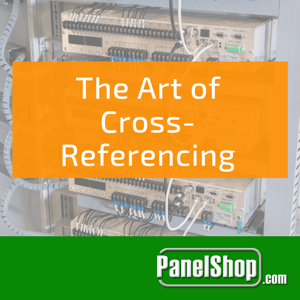 Cross-referencing presents itself as both a science and an art. If it is not done properly, it can create major problems, but implementing it with fluidity can lead to cost-effectiveness.
Cross-referencing presents itself as both a science and an art. If it is not done properly, it can create major problems, but implementing it with fluidity can lead to cost-effectiveness.
Why would a manufacturer want to replace a certain component of the automated system? The reasons can be many-fold, hovering around:
- End of support for the part
- Market availability constraints
- Rising costs
- Greater maintenance efforts
- Personal reasons
The list of reasons can go on, but the true problem occurs right after the decision has been taken. Even though some vendors may ease the replacement process by providing documentation regarding a compatible part(s), very often it is the responsibility of the engineering team to determine the product specifications that would result in expected operation.
For components such as sensors, the replacement might not be that complex as they are compatible with several standards. Even hardware connections have become standardized, with most manufacturers resorting to Micro and Pico Quick-Disconnect or QD 3,4 or 5-pin designs. This is especially true for inductive proximity sensors that come in standard sizes of 8/12/18/30mm.
Nonetheless, this doesn’t eliminate the need for studying the sensor specification sheet as photoeyes have different configurations depending on the target. This affects the mounting method, cabling and any other considerations that must be taken into account.
Analog and process control sensors have other issues that have to be addressed, such as programmable features, mounting methods and cabling. Replacing a single cable within a process plant may result in greater expenditure than a complete overhaul of the component. Downtime must be considered while making these replacements as the investment cost alone doesn’t determine the financial aspect of the replacement.
Next, physical aspect of the replacement needs to be considered for components such as motors. Usually, one should face little difficulty with these as mounting and shaft sizes have been standardized for decades. Even if the latter doesn’t match, coupling can be carried out to by-pass this issue.
Finally, when replacing the major components of an automation system such as PLC, HMI or SCADA, take into account the costs of downtime, associated licenses, spare parts and personnel who will carry out the installation.
To conclude, one should take under consideration the following three compatibilities to ensure smooth replacement of automation components:
- Electrical Interface/Signal compatibility, i.e. AC/DC, voltage/frequency, physical connections.
- Physical Compatibility, i.e. mounting method, space constraints and environmental parameters.
- Support Compatibility, i.e. the ease through which the item can be obtained, and the new installation can be carried out.
Cross-referencing is an art that can only be perfected with the engineering team’s experience as the ability to decide whether a component-level replacement or a total overhaul is necessary depends on market availability trends, cost-benefit analysis and availability of skilled personnel.





